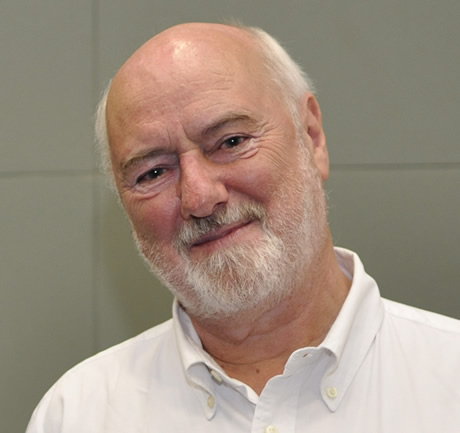编者按:为了介绍“设计研究”(Design Research)的学术动态,促进风景园林学设计理论的发展,“风景园林新青年”联合《风景园林》学刊对“设计研究”领域的国际知名专家学者进行了邮件访谈,在访谈中针对“设计研究”的一些基本概念和问题,根据各位专家各自的学术特长进行了针对性的交流。希望通过这些访谈的成果,我们能够向读者介绍“设计研究”的概念,并逐渐推动“设计研究”尤其是“通过设计的研究”(Research through Design)在风景园林学领域内的发展。
本文系“风景园林新青年”与《风景园林》杂志联合刊出
Nigel Cross教授是英国开放大学(Open Unversity)设计研究名誉教授。他从1960年代就开始从事设计研究和设计教育,在建筑和工业设计方面有丰富的学术和实践经验。在英国开放大学他的教学工作主要针对本科生的设计和技术。他的研究成果集中在计算机辅助设计、设计方法论和设计认识论等领域。他的主要研究兴趣是设计认知以及通过产品理论原型和其他研究分析设计师的认知行为和能力。

Prof. Nigel Cross
如何定义设计师式的认知方法?
设计行为中存在着内在的认知、思考和行动方式。在富有经验的设计师身上,它们仿佛是“本能”地展现出来,但是实际上它们是通过教育和训练被传授和培养起来的。设计研究的一个重要方面就是厘清并强调这些设计师式的认知方式。
设计师式的认知方法与科学思维和艺术思维有怎样的区别?
将设计与科学和人文进行比较是一种虽然粗糙,但行之有效的方法以对设计思维进行阐释。对这三种“文化”的教育都由一下三个方面构成:
- 传播有关于某一现象研究的知识
- 培训适宜的求知方法
- 形成观念体系和文化价值
如果我们在这三个方面分别对科学、人文和设计进行对比,我们可以更清楚的了解设计意味着什么,它有什么特殊性。
1. 每种文化下研究的现象
- 科学:自然世界
- 人文:人类经验
- 设计:人工世界
2. 每种文化下适宜的方法:
- 科学:受控的试验,分类,分析
- 人文:类推,比喻,批评,评价
- 设计:建模,图式化,综合
3. 每种文化的价值:
- 科学:客观、理性、中立,而且关注“真实”
- 人文:主观、想象、承诺,而且关注“公正”
- 设计:实用、独创、共情 ,而且关注“适宜”
在大多数情况下,科学与人文的对比(如主观对客观,实验对类推)相对于在设计中树立相关的比较概念要容易。这也许是一种迹象说明在我们的语言和概念中缺乏设计这种“第三类文化”,而不是承认其自身并不真实存在。但是我们仍然面临一种需求,要我们更清晰地阐述作为“设计师式的”而非“科学的”或“艺术的”意味着什么。
为什么说明确设计师式思维方法的具体特点非常重要?
正如其他科学和艺术中的知识文化,集中于知识的基础形式对于科学家和艺术家来说非常特别,我们必须集中于“设计师式”的感知、思维和行动。设计师理解和解决问题的方法是一个被忽视的领域。设计师式的思维方式从来都在相当程度上被大多数教育领域所忽视,甚至是高等教育。设计方法作为一个学科,相对于设计作为一门科学或一门艺术,企图发展的是覆盖所有设计领域的设计理论途径。这个学科的基础公理就是,独立于不同的设计实践专业领域,设计师的意识和能力中,存在着特有的知识形式。
五本推荐书籍:
(都与理解设计师式认知过程相关)
- N. Cross, Designerly Ways of Knowing, Birkhauser, Basle, Switzerland.
- N. Cross, Design Thinking, Berg, Oxford, UK (to be published April 2011).
- B. Lawson, Design in Mind, Architectural Press, Oxford, UK.
- B. Lawson and K. Dorst, Design Expertise, Architectural Press, Oxford, UK.
- K. Dorst, Understanding Design, BIS Publishers, Amsterdam, The Netherlands.
best wishes,
Professor Nigel Cross
Nigel Cross is Emeritus Professor of Design Studies. With academic and practical backgrounds in architecture and industrial design, he has been engaged in design research and design education since the nineteen-sixties. His Open University teaching was mainly on undergraduate level courses in design and technology. His research has been in computer-aided design, design methodology and design epistemology. His principal research interest is in design cognition, analysing the cognitive activities and abilities of designers, through protocol and other studies.
How to define “designerly way of knowing”?
These are the ways of knowing and thinking and acting that are inherent in designing. They may appear to be ‘intuitive’ processes to experienced designers, but they are actually learned and developed through education and experience. An important aspect of design research is to clarify and articulate these designerly ways of knowing.
How different is the designerly way of thinking from scientific thinking and artistic thinking?
Contrasting design with the sciences and the humanities is a useful, if crude, way of beginning to be more articulate about design thinking. Education in any of these ‘cultures’ entails the following three aspects:
- the transmission of knowledge about a phenomenon of study
- a training in the appropriate methods of enquiry
- an initiation into the belief systems and values of the culture
If we contrast the sciences, the humanities, and design under each of these three aspects, we may become clearer about what we mean by design, and what is particular to it.
1. The phenomenon of study in each culture:
- in the sciences: the natural world
- in the humanities: human experience
- in design: the artificial world
2. The appropriate methods in each culture:
- in the sciences: controlled experiment, classification, analysis
- in the humanities: analogy, metaphor, criticism, evaluation
- in design: modelling, pattern-formation, synthesis
3. The values of each culture:
- in the sciences: objectivity, rationality, neutrality, and a concern for ‘truth’
- in the humanities: subjectivity, imagination, commitment, and a concern for ‘justice’
- in design: practicality, ingenuity, empathy, and a concern for ‘appropriateness’
In most cases, it is easier to contrast the sciences and the humanities (e.g. objectivity versus subjectivity, experiment versus analogy) than it is to identify the relevant comparable concepts in design. This is perhaps an indication of the paucity of our language and concepts in the ‘third culture’ of design, rather than any acknowledgement that it does not really exist in its own right. But we are still faced with the need to be more articulate about what it means to be ‘designerly’ rather than to be ‘scientific’ or ‘artistic’
Why is it important to identify the specific feature of designerly way of thinking?
Just as the other intellectual cultures in the sciences and the arts concentrate on the underlying forms of knowledge peculiar to the scientist or the artist, so we must concentrate on the ‘designerly’ ways of knowing, thinking and acting. The way designers approach and solve problems is an overlooked field. Designerly ways of thinking have been fairly neglected by most areas of education, even in higher education. The approach to design as a discipline, rather than design as a science or an art, seeks to develop approaches to a theory of design across all fields of design. The underlying axiom of this discipline is that there are forms of knowledge peculiar to the awareness and ability of a designer, independent of the different professional domains of design practice.
好是好,可惜刚开了个头就没了。
这几本书国内很难看到啊,Designerly Ways of Knowing只能在GOOGEL上看前25页,
设计方法论,或者研究方法之类的课程,很想在研究生中开出,
可惜没有合适的老师和教材。
这是系列访谈中的一个。 我请了好几位专家。每人从自己的领域谈几个比较基础的问题。然后几个人的合起来看就会把设计研究的概念、意义、方法都涉及到。这样的话大家对这个话题的一些基本概念会有一个初步的认识。这些书籍我们可以慢慢引进。因为设计研究本身在欧洲也是个比较新的话题,一些成果陆陆续续在近年才出现。所以我们还有时间跟上脚步不断引进一些新的内容。
Designerly Ways of Knowing已经由华中科技大学出版社翻译出版中,预计年内上架。翻译完成后,诚邀试读!
Designerly Ways of Knowing 这本书现在有翻译过来的了,叫做设计师式认知。